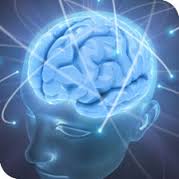
When we visit our health practitioners, one of the first steps before seeing the doctor is to get our vital signs measured: height and weight, temperature, blood pressure, heart rate, chest air-clarity, and sometimes, a blood profile. The purpose is to give our practitioners an on-going tracking of our basic health.
Now, fast-forward into 2016 and beyond. In the near future, you may find that practitioners will begin testing your brain-health. In the past, brain function testing was conducted only after some sort of disease or trauma, such as a concussion. But, today, researchers have discovered how to read your brain’s vital-sign framework.
Researchers at Simon Fraser University have announced a new system for measuring physiology-based brain vital signs. Their research team was led by professor Ryan D’Arcy, with partners from the Mayo Clinic, Sheba Medical Centre in Israel and a local high-tech company, HealthTech Connex, Inc. They have discovered a way to allow practitioners to be able to better translate their patients’ brain wave patterns in a more objective and practical manner that helps them measure the brain-health of the patient.
What will this do? First, it will allow practitioners to establish a baseline for a patient’s brain activity. Secondly, it will allow researchers the opportunity to learn what goes on in the brain, overtime, in certain brain-disease states, such as Alzheimer’s Disease … and how to heal it. It marks the beginning of an exciting road of being able to evaluate and optimize brain health on a mass basis.
Basically, they have taken a complex brain wave science and turned it into an understandable and workable form that can be implemented throughout clinics, hospitals, and medical offices. To learn about the new NeuroCatch product that HealthTech Connex, Inc. is developing, click here.
